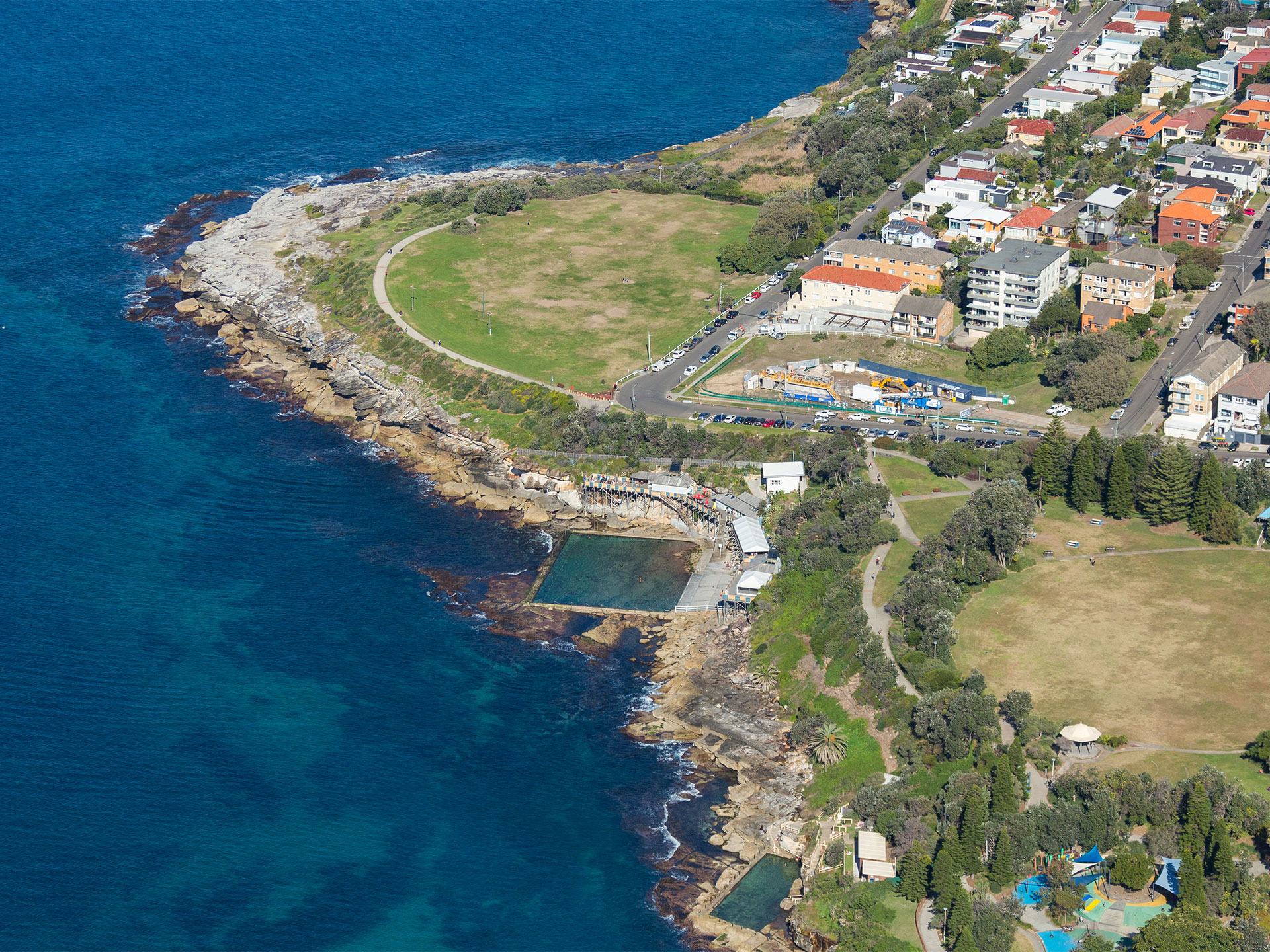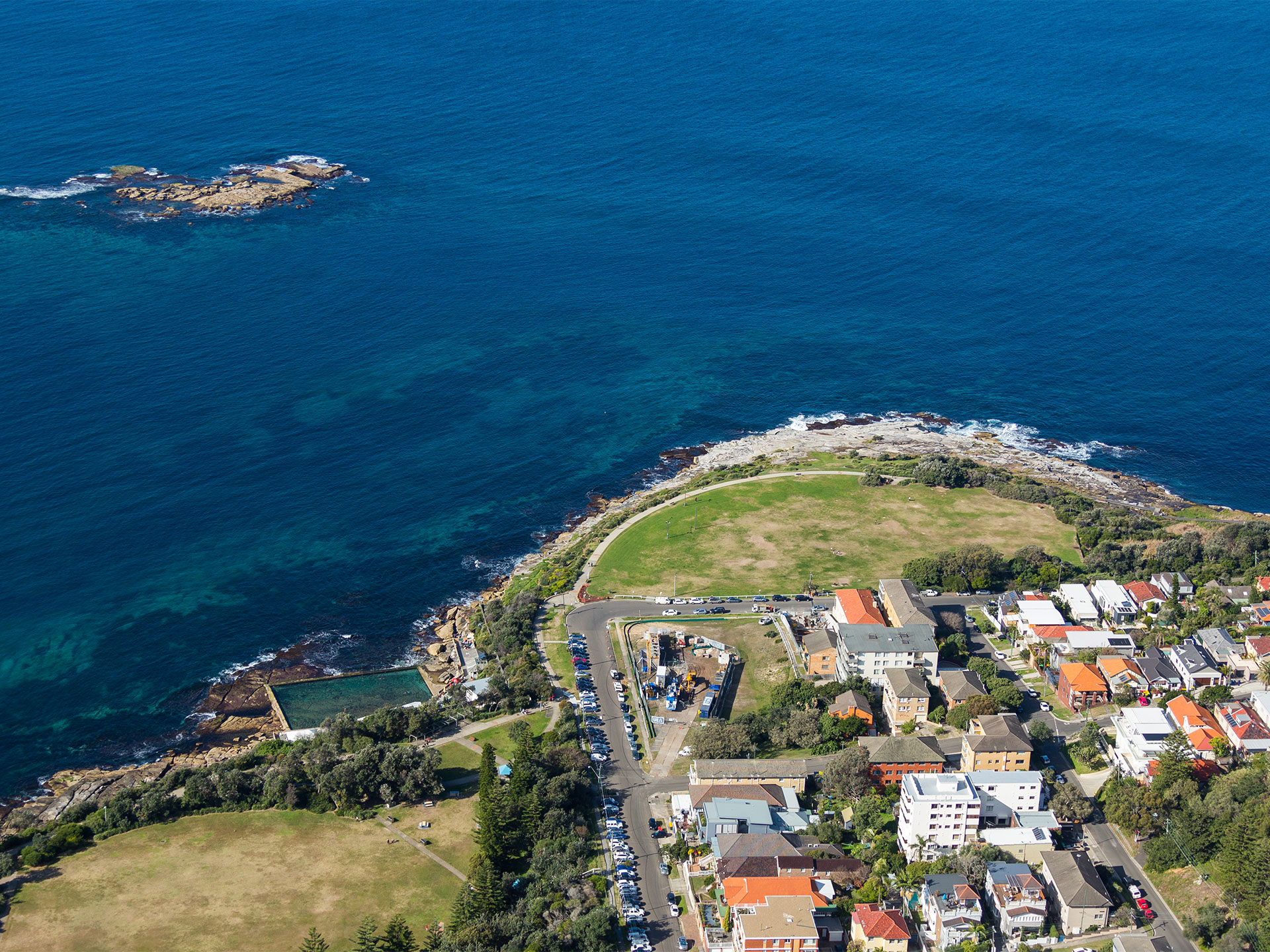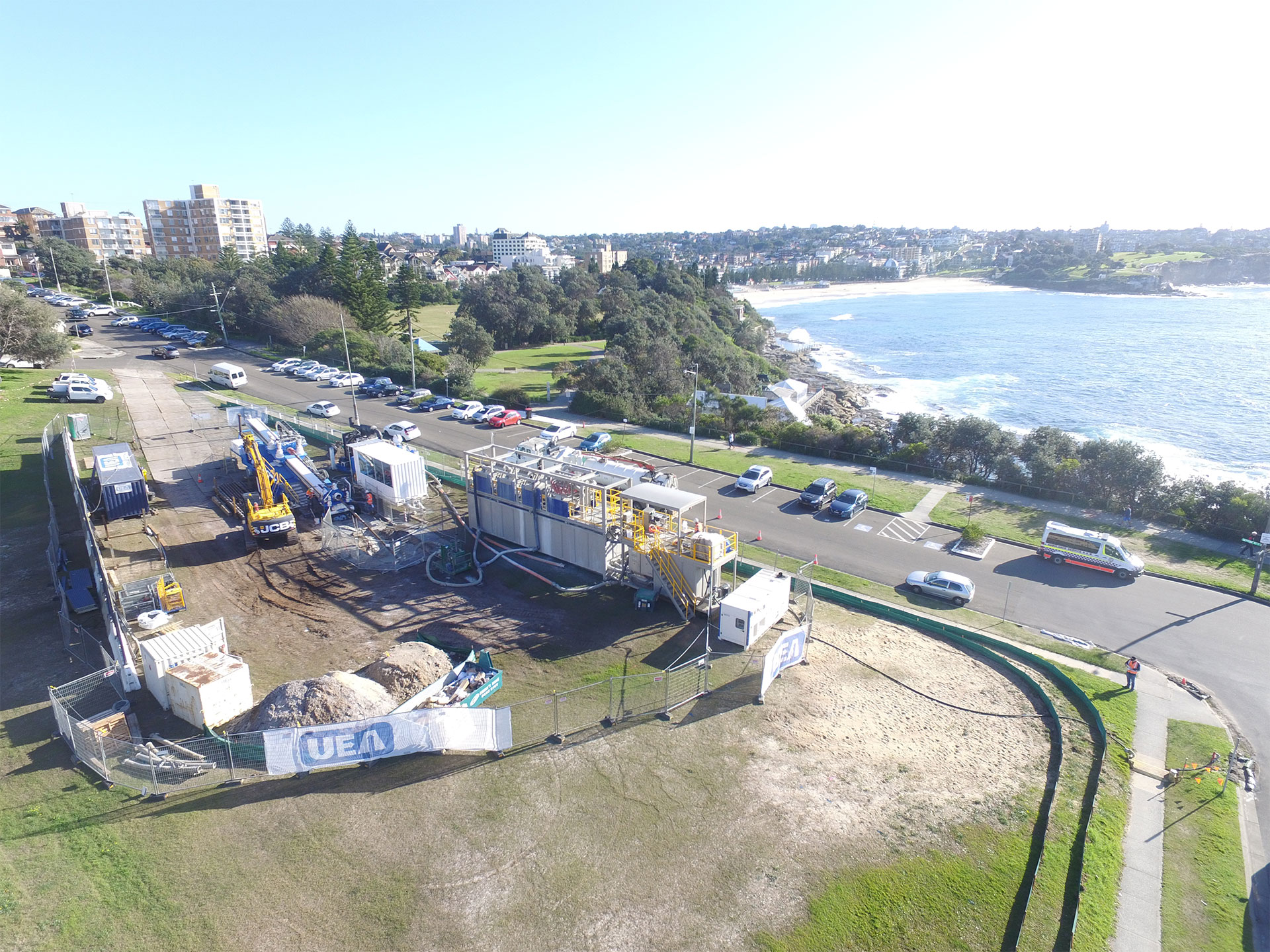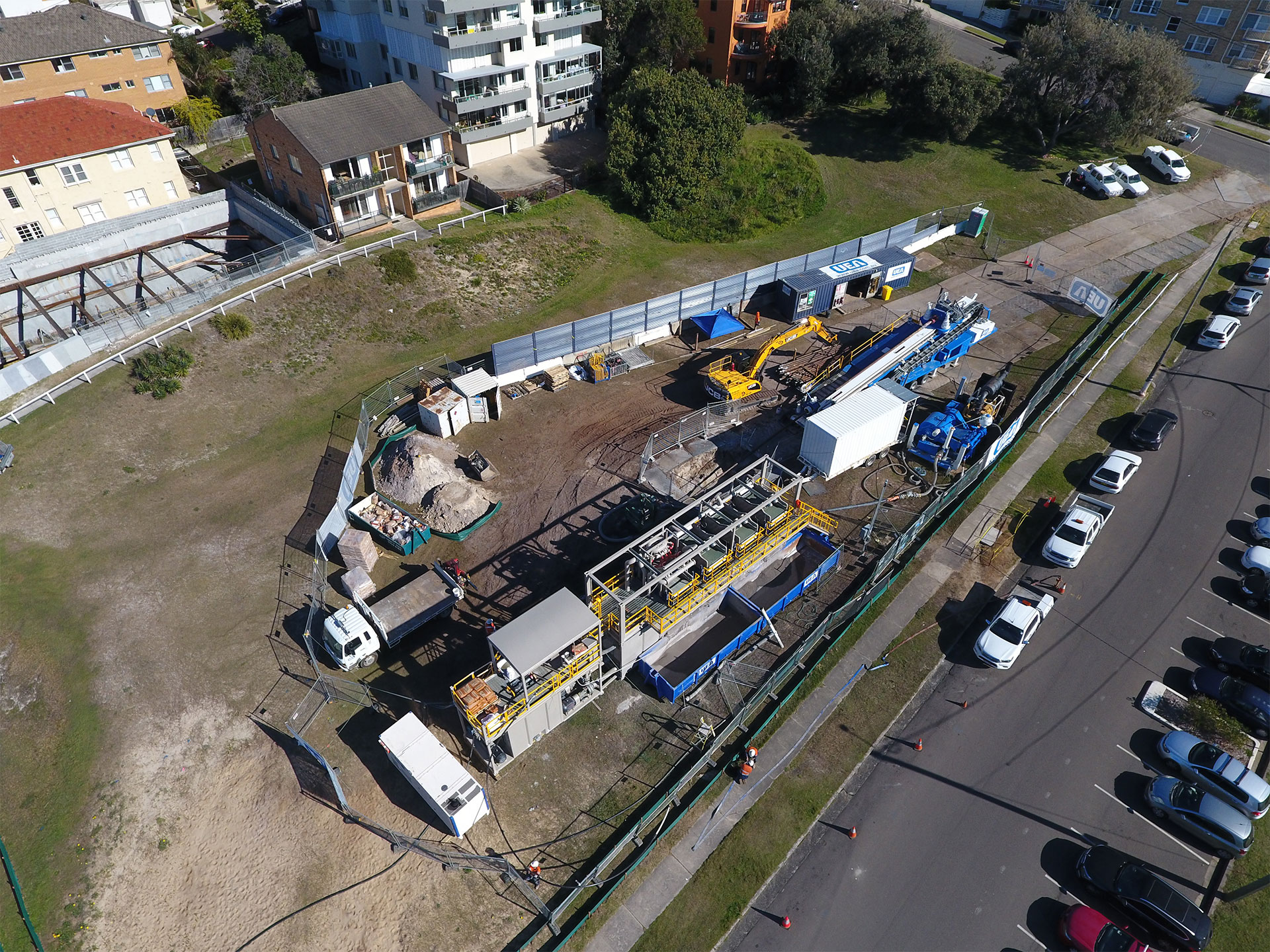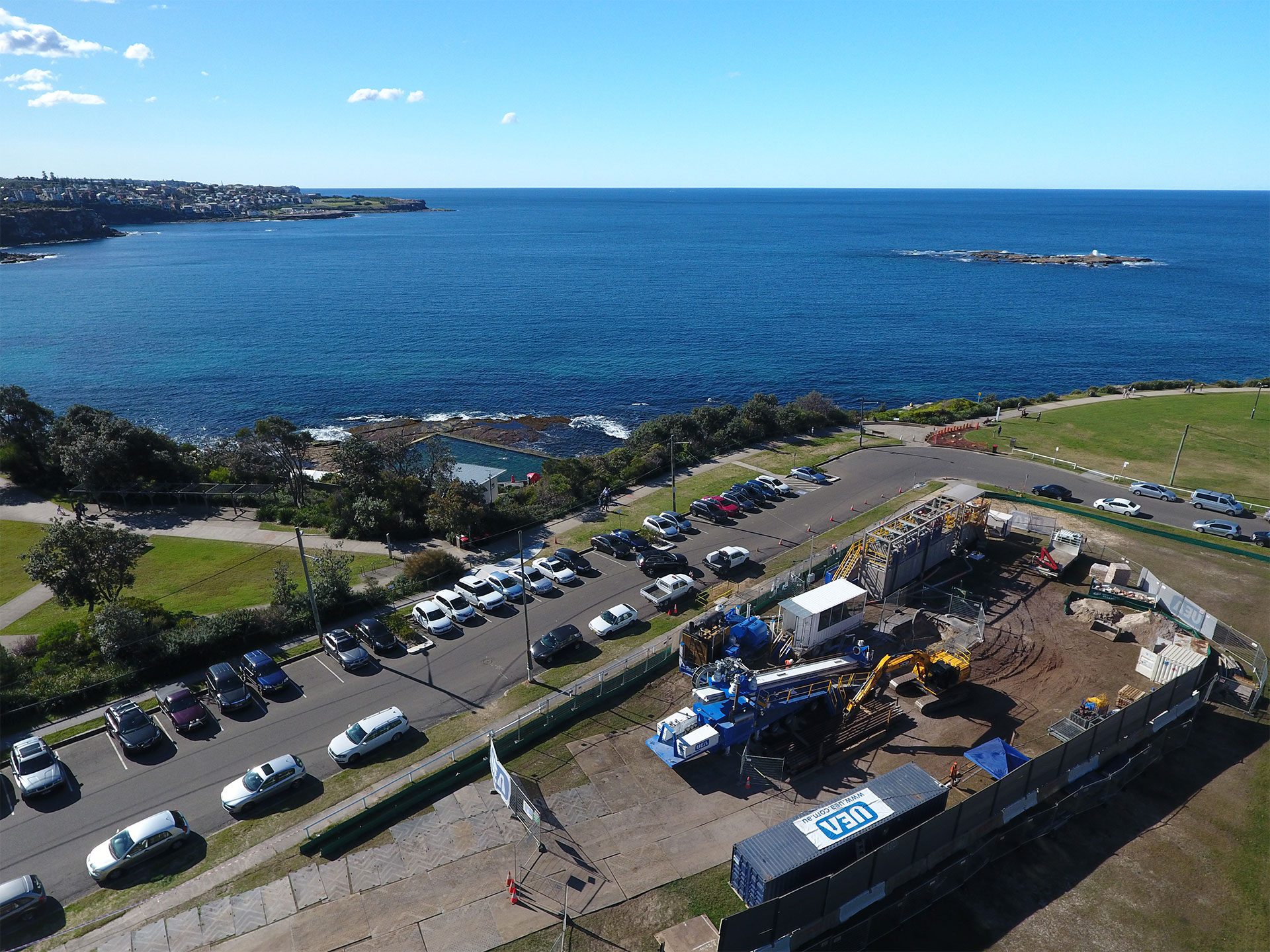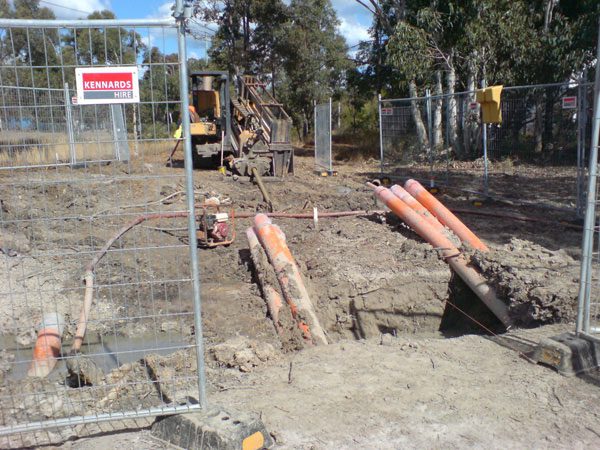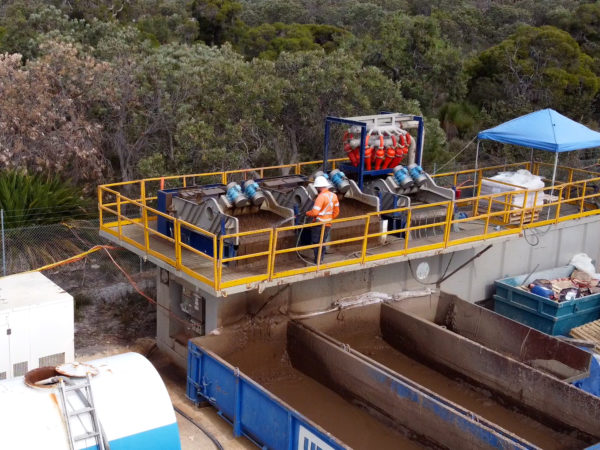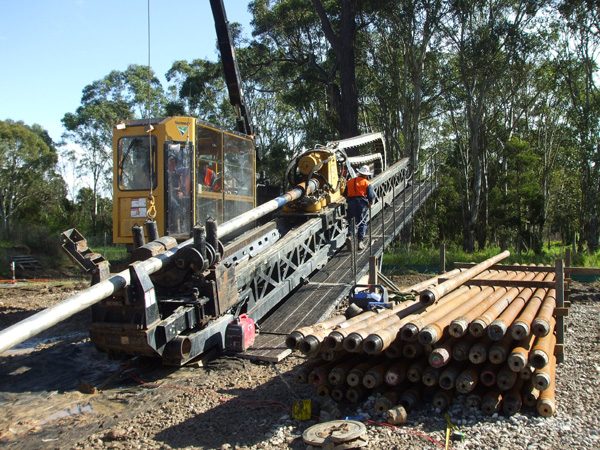Location
The Hawaiki cable landing site is within Sydney’s Southern Cable Protection Zone (CPZ) at Coogee Beach. This site was selected as it is the furthest distance from existing submarine cables and it is also the closest landing point to the Cable Landing Station (CLS) in Alexandria.
Five possible launch site options were originally tendered. The final chosen location at the rear of Trenerry Reserve was selected based on its lower impact on residential and commercial properties, more efficient access to the land-based route, better vehicular access than other sites and the ability to install a straighter HDD bore to lower anticipated cable haul tensions.
Bore Design
As a part of the horizontal directional drill design component, UEA was responsible for both the land-based survey of the route and the review of the near shore survey data. This ensured that the bore design would meet all environmental approvals and fit within the constraints placed by the client and approving organisations.
UEA’s in-house team undertook geotechnical investigation, service location works and potholing of existing assets. This work helped to confirm a suitable entry angle within the entry site, and also to avoid a live 1600mm hand dug sewer tunnel. The bore design allowed for sufficient clearance to the cliff face and near shore marine environments, eliminating the risk of drilling fluid loss to the formation. The design also met the requirements of being located at least 100 metres away from all rock reefs and exiting within sand ground conditions. The installed conduit was designed to be over 60 metres deep as it crossed the cliff edge and maintain 30 metres of cover below the seabed before punching out of the sea floor at approximately 32 metres water depth – 1,300 metres off shore.
Approvals
UEA was responsible for gaining all necessary permits and approvals, including the management of traffic and community relations. A detailed Construction Environmental Management Plan and Community Liaison Plan were implemented, which included council notifications, resident letterbox drops, individual local business consultations and the establishment of a community information stall to answer questions and provide details about the project. Traffic management was especially difficult on this project due to the narrow and congested Eastern Suburbs streets, as well as the requirement to mobilise 13 semi-trailers, multiple oversized loads up to 3.6 metres wide and the 300 tonne capacity drill rig to the seaside suburb.
Drilling
The HDD entry compound was set up to reduce as much noise impact as possible for residents, including the installation of a 4.2 metre high noise abatement wall and strategic placement of equipment on site. Once established, drilling works commenced within rock, which eliminated the need for casing of the borehole. Pilot bore tracking utilised the new DigiTrak Falcon F5 system, allowing faster set up and progression as well as the ability to test the new equipment within virgin sandstone ground conditions in an area of minimal background interference.
Pilot boring was completed via walkover tracking to Ch200, prior to tripping out to change over to the ParaTrack2 wireline steering system. The new DCI F5 Falcon performed better than expected, achieving 29.1 metre depth below surface – deeper than UEA had ever previously completed walkover tracking. Pilot boring continued with a number of survey shots taken before the steering tool passed the cliff edge, out of the range of the beacon and on its way towards the exit point 1,100 metres further out to sea.
Drilling works progressed well, with an average of 130 metres drilled per 11 hour daytime shift in the 80mPa sandstone, six days per week. Ground conditions were consistent for the duration of the bore, and the pilot bore was completed in a single pass without the need to trip out drill rods. A Hawaiki team member said of the works that “completing the 1,300 metre bore without a single wireline fault or trip was a great result and a testament to the crew on site following all due processes and the quality of their work”.
In order to meet the strict environmental controls and approvals required to work within the nearshore marine environment, the drilling fluid program was changed to biodegradable xanthan and freshwater for the punch out into the seafloor so that no bentonite clay material entered the ocean.
Completion
At the completion of the underbore, UEA’s diving crew confirmed the specific location of the punch out on the seafloor and also confirmed that all required separation to rock reefs was maintained. The pilot bore was established by survey to have reached the seafloor at the correct location, with the drill head only 500mm north of the proposed exit location. Drill rods and tooling were then withdrawn from the borehole to allow for the steel drill conduit installation and custom completion piece, in anticipation for cable installation.
The roping and proving of the installed conduit was successfully undertaken without issue, leaving a 16mm draw wire in place ready for the cable hauling works. All equipment was demobilised following the successful installation of the underbore conduit, the cast in-situ beach manhole construction was completed and the park surface was restored.


